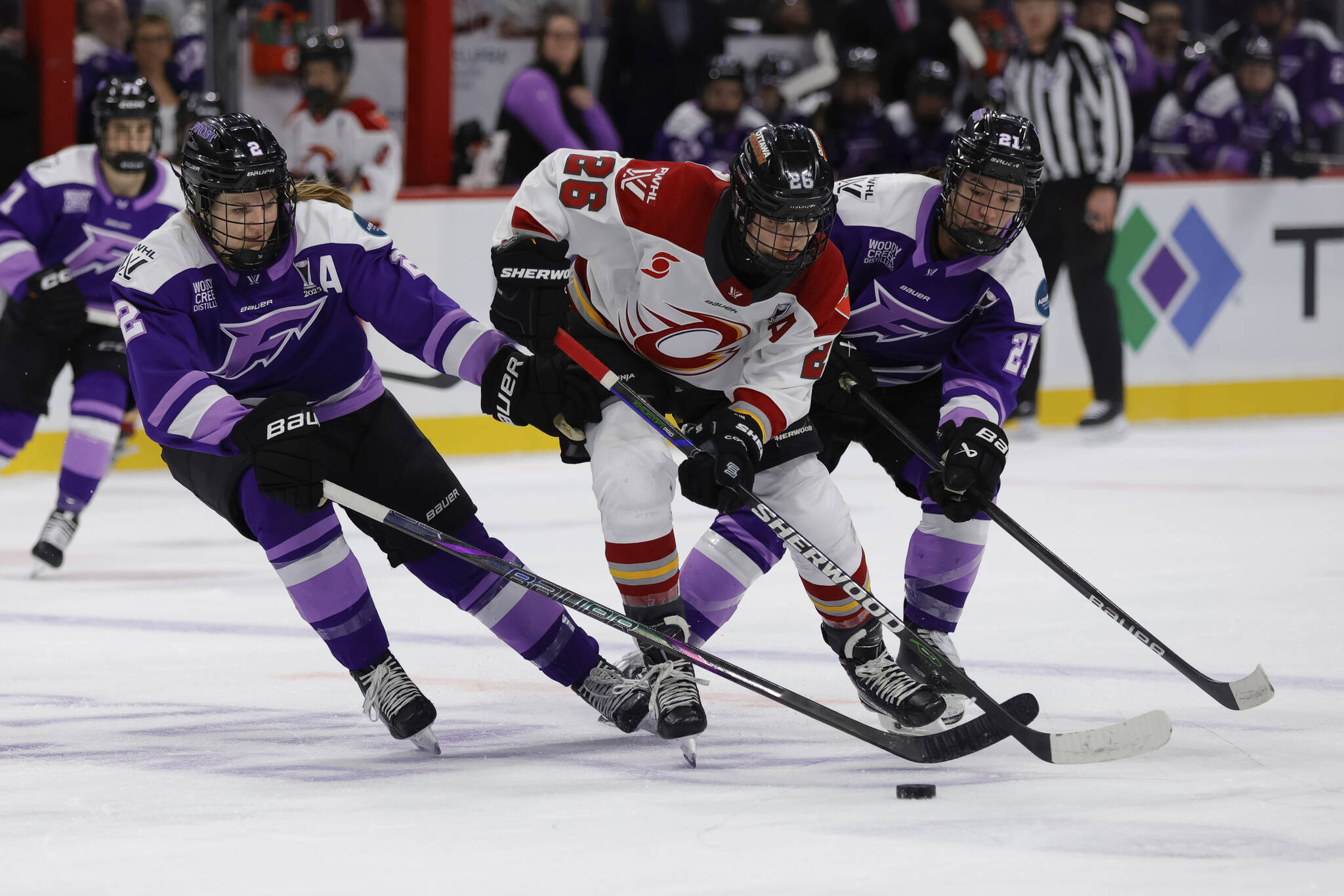Health
Girls Drop Out of Sports Faster Than Boys, Calls for Action

In Canada, girls are leaving sports at double the rate of boys by the age of 14. The reasons for this trend extend beyond just personal choice, highlighting a significant cultural and systemic issue in youth sports participation. As the nation experiences a surge in women’s sports visibility, the need for community support and resources has never been more urgent.
Understanding the Participation Gap
Engagement in sports offers numerous benefits for young people, including improved physical health, enhanced mental well-being, and the development of social skills. Yet, the stark reality is that fewer girls are capitalizing on these advantages. According to a recent report by Canadian Women and Sport, the lack of role models remains a significant barrier to female participation.
Recent investments in women’s sports have created new opportunities for visibility. The expansion of the Professional Women’s Hockey League (PWHL) and increased airtime for the Women’s National Basketball Association (WNBA) are indicative of changing attitudes. These developments, along with high-profile successes like Christine Sinclair’s Olympic achievements and Summer McIntosh’s rise in swimming, have begun to inspire a new generation of female athletes.
Research identifies a phenomenon known as the “demonstration effect,” where witnessing elite athletes can motivate young girls to engage in sports themselves. Despite this, there is a critical gap between inspiration and actual participation in local clubs, which often lack the necessary resources to accommodate the influx of new athletes.
Building Stronger Community Support
To effectively address the participation gap, communities need to enhance the infrastructure and resources available to local sports clubs. As participation increases, these clubs face challenges in providing sufficient programming, including facility space, qualified coaches, and necessary equipment. The average cost of youth sports in Canada, such as hockey, can exceed $4,478 per child, which adds a financial barrier for many families.
Community organizations must explore innovative solutions to keep sports accessible. This includes offering basic equipment, creating low-cost programs, and leveraging government financial supports. Moreover, as demand grows, there is an urgent need to train and retain women in coaching and officiating roles, as they serve as vital role models for young female athletes.
Additionally, it is essential for community sports clubs to reflect the diversity of their participants. Programs should be designed to accommodate various backgrounds, ensuring that girls with disabilities, newcomers, and those from different cultural backgrounds feel included and supported.
Corporate Canada is beginning to recognize the potential of women’s sports, with opportunities for sponsorships and Corporate Social Responsibility (CSR) programs aimed at supporting female athletes. By aligning with community clubs, corporations can help create lasting change and enable more girls to participate in sports.
Ultimately, creating an inclusive environment in sports requires a concerted effort from all sectors. As communities rally to support female athletes, they can help close the participation gap and empower the next generation of girls to thrive in sports.
“Every girl brings different needs and expectations to sport,” said Georgia Teare, an assistant professor at Western University. “Community sport clubs must ensure their programs are designed to provide quality experiences.”
As Canada stands on the cusp of a transformation in women’s sports, the focus must remain on fostering a supportive and inclusive environment that not only attracts girls to sports but also retains them for the long term.
-

 Education3 months ago
Education3 months agoBrandon University’s Failed $5 Million Project Sparks Oversight Review
-

 Science4 months ago
Science4 months agoMicrosoft Confirms U.S. Law Overrules Canadian Data Sovereignty
-

 Lifestyle3 months ago
Lifestyle3 months agoWinnipeg Celebrates Culinary Creativity During Le Burger Week 2025
-

 Health4 months ago
Health4 months agoMontreal’s Groupe Marcelle Leads Canadian Cosmetic Industry Growth
-

 Science4 months ago
Science4 months agoTech Innovator Amandipp Singh Transforms Hiring for Disabled
-

 Technology3 months ago
Technology3 months agoDragon Ball: Sparking! Zero Launching on Switch and Switch 2 This November
-

 Education3 months ago
Education3 months agoRed River College Launches New Programs to Address Industry Needs
-

 Technology4 months ago
Technology4 months agoGoogle Pixel 10 Pro Fold Specs Unveiled Ahead of Launch
-

 Business3 months ago
Business3 months agoRocket Lab Reports Strong Q2 2025 Revenue Growth and Future Plans
-

 Technology2 months ago
Technology2 months agoDiscord Faces Serious Security Breach Affecting Millions
-

 Education3 months ago
Education3 months agoAlberta Teachers’ Strike: Potential Impacts on Students and Families
-

 Science3 months ago
Science3 months agoChina’s Wukong Spacesuit Sets New Standard for AI in Space
-

 Education3 months ago
Education3 months agoNew SĆIȺNEW̱ SṮEȽIṮḴEȽ Elementary Opens in Langford for 2025/2026 Year
-

 Technology4 months ago
Technology4 months agoWorld of Warcraft Players Buzz Over 19-Quest Bee Challenge
-

 Business4 months ago
Business4 months agoNew Estimates Reveal ChatGPT-5 Energy Use Could Soar
-

 Business3 months ago
Business3 months agoDawson City Residents Rally Around Buy Canadian Movement
-

 Technology2 months ago
Technology2 months agoHuawei MatePad 12X Redefines Tablet Experience for Professionals
-

 Business3 months ago
Business3 months agoBNA Brewing to Open New Bowling Alley in Downtown Penticton
-

 Technology4 months ago
Technology4 months agoFuture Entertainment Launches DDoD with Gameplay Trailer Showcase
-

 Technology4 months ago
Technology4 months agoGlobal Launch of Ragnarok M: Classic Set for September 3, 2025
-

 Technology4 months ago
Technology4 months agoInnovative 140W GaN Travel Adapter Combines Power and Convenience
-

 Science4 months ago
Science4 months agoXi Labs Innovates with New AI Operating System Set for 2025 Launch
-

 Top Stories2 months ago
Top Stories2 months agoBlue Jays Shift José Berríos to Bullpen Ahead of Playoffs
-

 Technology4 months ago
Technology4 months agoNew IDR01 Smart Ring Offers Advanced Sports Tracking for $169










